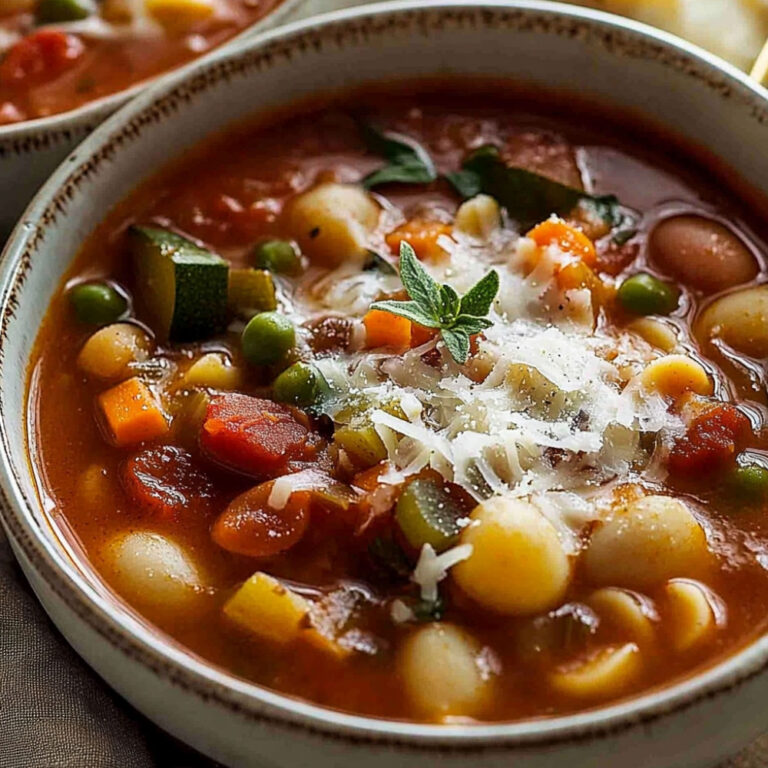Italian Marinated Pork with Orzo
It always hits me—right when the garlic sizzles in the oil and something about the scent, that warm, peppery sweetness—you know instantly, this is going to be good. The pork, already soaking up those herby, lemony whispers from its quick marinade, brings out that rustic kind of comfort. And when it tumbles into the skillet with the orzo, the creamy feta, bright basil, and those salty slivers of black olive—well, suddenly the kitchen smells like a southern Italian summer evening. Not in a grand way, more like something simple, unfussy, deeply familiar. Something worth pausing for, even on a busy weeknight.
Why You’ll Crave It
- It’s fast – just 25 minutes from start to plate (yes, really… even with marinating).
- The flavors are balanced the way you want them: savory, tangy, with a touch of brine and richness.
- That soft, chewy orzo catches every bit of flavor—like little scoops of deliciousness in each bite.
- Very few ingredients, but it never, ever tastes sparse or plain.
- Feels a little special without being complicated—honestly, a very good trait for food to have.
The first time I made this, my friend Luca dropped by unannounced… and still talks about it like it was fate.
What You’ll Need
- 500 grams pork tenderloin: trim the silver skin if there’s any, and cut into ~1-inch chunks—it cooks quicker
- 200 grams orzo pasta: that small, rice-shaped pasta that soaks up everything around it
- 150 grams feta cheese: crumbled roughly, not too fine—it should melt in places and stay chunky in others
- 100 grams black olives: pitted and sliced (Kalamata if you have them, but regular black olives are fine too)
- 3 tbsp olive oil: good quality if you’ve got it—it goes in the marinade and hits the pan later
- 1 small lemon, juiced: adds brightness and balance to the oil and herbs
- 2 cloves garlic, minced finely: not too much, just enough to warm things up
- 1 tsp dried oregano or Italian seasoning: or both, honestly—it deepens that nostalgic, Mediterranean feel
- Salt and black pepper: to taste—taste generously, season gently
- A handful of fresh basil: roughly torn before serving, so it still feels vibrant and floral
Easy How-To
Make the Marinade
In a medium bowl (I always use the same scratched-up one for marinades), whisk together your olive oil, lemon juice, garlic, oregano, and a good pinch of salt and pepper. Enough to coat the pork thoroughly—not swimming in it, but enough to flavor every bit.
Coat the Pork, Let It Sit
Drop in your pork pieces and gently fold them around until every bit has some marinade on it. Cover and let it sit in the fridge for at least 15 minutes. A little longer? Even better. If you happen to prep it at lunch for dinner… wonderful.
Meanwhile, Boil the Orzo
Bring a pot of salted water to a boil. Cook the orzo like you would pasta—check it a minute before the box tells you. You want it toothsome, not mushy. Drain, toss with a bit of olive oil so it doesn’t clump.
Sauté the Pork
Heat a large skillet over medium-high heat. You don’t want the pan smoking, but it should sizzle respectably when the pork hits it. Cook in batches if needed, turning so most of the sides get golden brown bits. It should be nicely cooked through, about 5–7 minutes.
Bring It All Together
Add the cooked orzo to the skillet with the pork (yes, use that same skillet—it holds the fond and flavor). Tip in the olives and feta and stir gently, just enough to warm it through and let some of the cheese melt. Taste. Adjust with salt or lemon if it feels like it needs a bit more life.
Finish and Serve
Scatter the torn basil over at the end—it shouldn’t wilt into nothing. Serve right from the pan or in a warm bowl. Either way, it deserves full attention for at least the first few bites before you drift into conversation again.
Good to Know
- If your feta feels too briny or sharp, just soak it in water for 10 minutes and drain—it mellows beautifully.
- Pork tenderloin cooks fast, but keep an eye—don’t walk away. Overcooked morsels are nobody’s friend.
- Sometimes I let the orzo get a bit crisp at the bottom in the pan. It’s not traditional, but… wow.
Serving Ideas
- Perfect with a crisp green salad—arugula, maybe, with shaved fennel and a mustardy dressing.
- Serve it over a bed of garlicky sautéed spinach if you want something warmer, more grounding.
- A glass of chilled white wine? Or even rosé. Something light but dry. It fits the mood.
Top Tricks
- Zesting the lemon before juicing it and adding a bit of zest to the orzo right at the end brings a quiet perfume that lingers.
- Don’t over-stir once the feta goes in—it should warm, melt in spots, not turn entirely creamy.
- That pork can easily be grilled instead—just get a bit of char and slice it over the orzo instead of mixing it in, for a more elegant plate.
Frequently Asked Questions
Can I use chicken instead of pork?
Yes, absolutely—boneless, skinless chicken thighs work especially well. Just keep the pieces evenly sized and cook them until heated through with those golden edges.
What can I use instead of orzo?
Small pasta shapes like risoni or even pearl couscous can work. Even something like farro or quinoa if you’re going for a more whole-grain direction.
How long should I marinate the pork?
Even 15 minutes makes a difference—but if you can give it a few hours, or even overnight, you’ll get a deeper flavor. Just cover and refrigerate.
Can I prep this ahead?
Yes. You can cook everything ahead and gently reheat it in a pan with a splash of broth or water. Add the fresh basil just before serving so it doesn’t get dull.
Is it freezer-friendly?
Not really. The feta loses its texture, and the orzo gets a bit mushy. Better to keep leftovers in the fridge and enjoy within 2–3 days.







